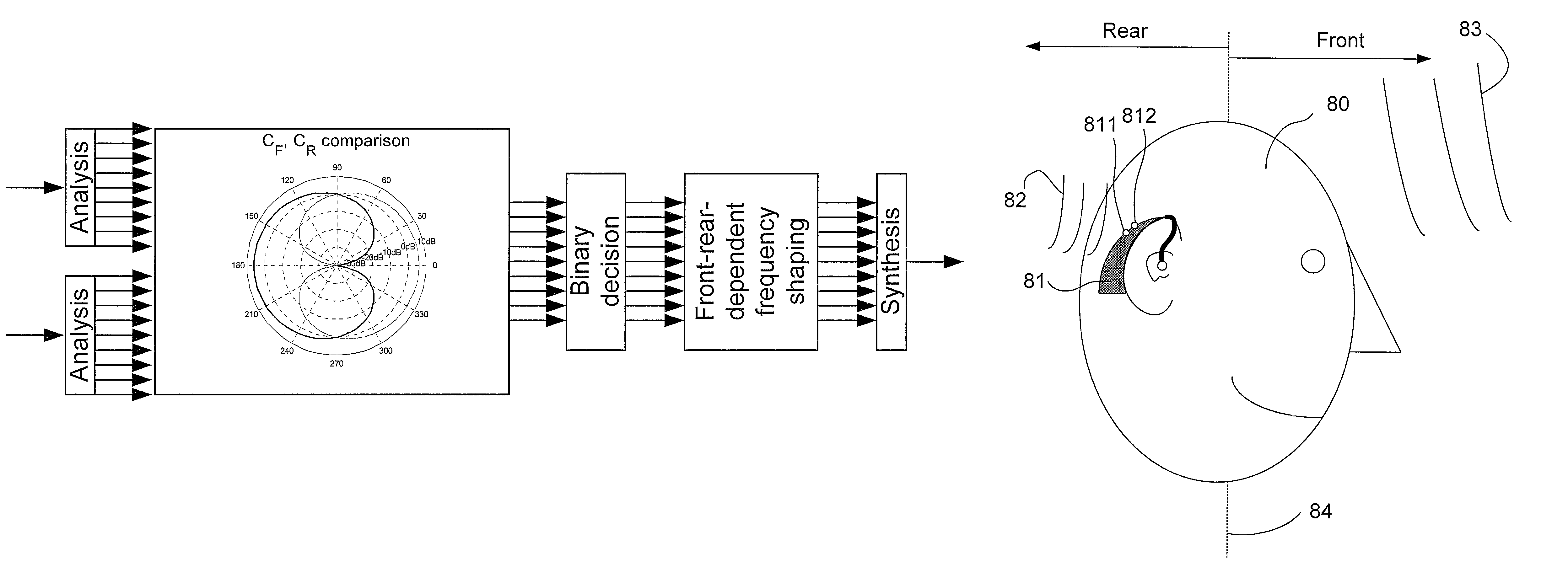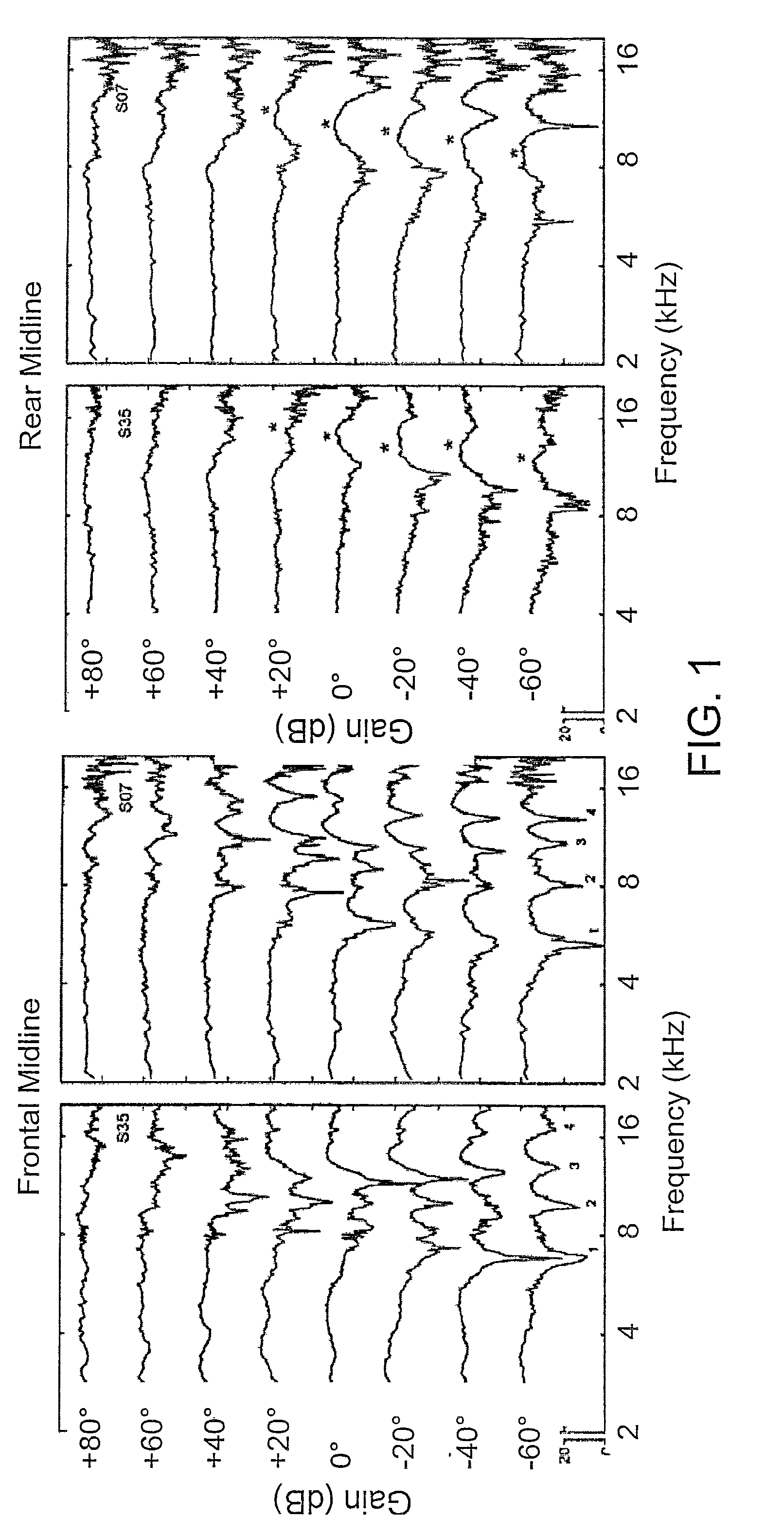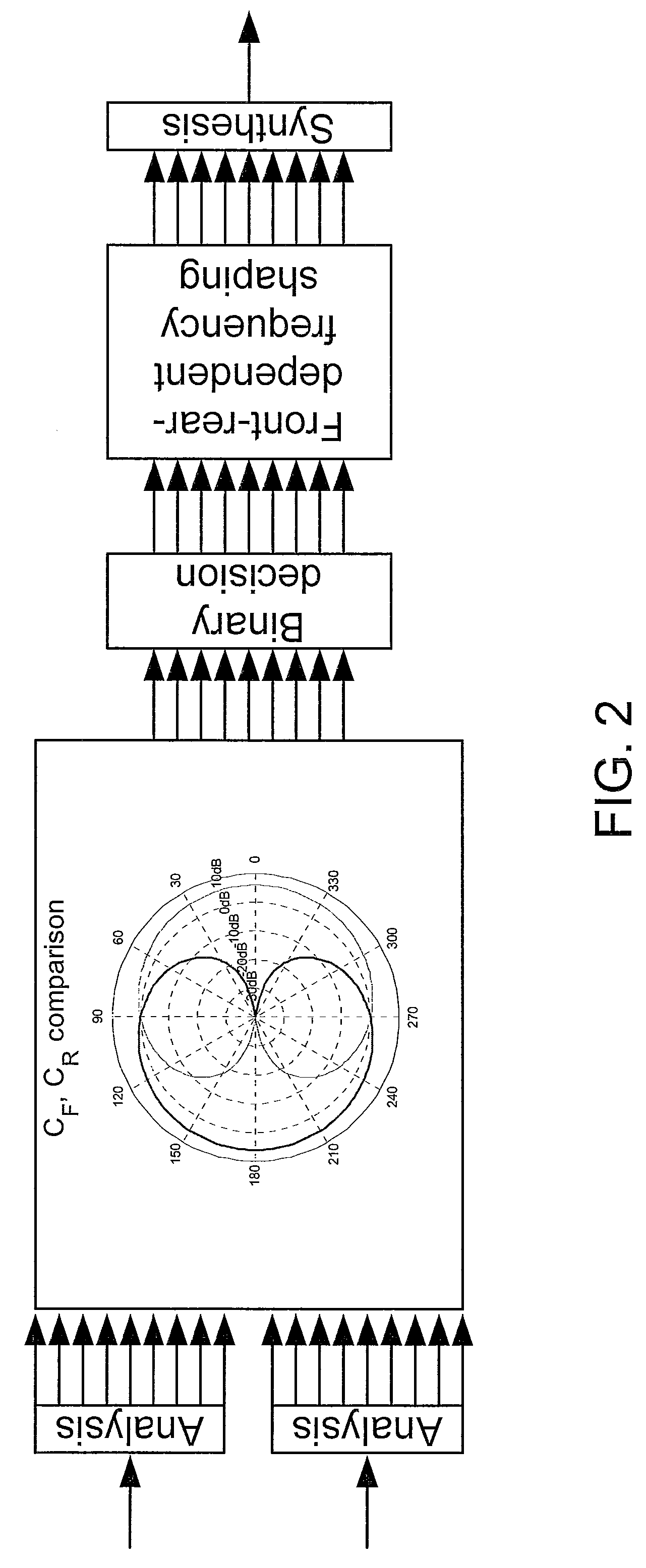Listening device providing enhanced localization cues, its use and a method
a listening device and localization cue technology, applied in the direction of transducer circuits, transducer casings/cabinets/supports, electrical transducers, etc., can solve the problems of affecting the perception of localization cues, annoying and dangerous, and the ability to decide from which direction a given sound is received, so as to enhance front-rear localization and good front-rear estimation
- Summary
- Abstract
- Description
- Claims
- Application Information
AI Technical Summary
Benefits of technology
Problems solved by technology
Method used
Image
Examples
Embodiment Construction
[0070]The shape of the external ears influences the attenuation of sounds coming from behind. The attenuation is frequency dependent and is typically larger at higher frequencies.
[0071]A problem in particular with behind-the-ear (BTE) hearing aids is that the microphones are placed above / behind the external ear and thus this attenuation of sounds coming from behind disappears (cf. e.g. FIG. 8). Front-back confusions are a common problem for hearing impaired users of this kind of hearing aids. It is proposed to compensate for that by applying different frequency shaping based on a decision (possibly binary) of whether a particular instance in time and frequency (a TF-bin or unit) has its origin from the front of the back of the user, thus restoring or enhancing the natural front-back cues.
[0072]The terms ‘front-back’ and ‘front-rear’ are used interchangeably with no intended difference in meaning.
[0073]A further possibility is to not just compensate for the BTE placement, but to furt...
PUM
 Login to View More
Login to View More Abstract
Description
Claims
Application Information
 Login to View More
Login to View More - R&D
- Intellectual Property
- Life Sciences
- Materials
- Tech Scout
- Unparalleled Data Quality
- Higher Quality Content
- 60% Fewer Hallucinations
Browse by: Latest US Patents, China's latest patents, Technical Efficacy Thesaurus, Application Domain, Technology Topic, Popular Technical Reports.
© 2025 PatSnap. All rights reserved.Legal|Privacy policy|Modern Slavery Act Transparency Statement|Sitemap|About US| Contact US: help@patsnap.com



